100 - Celebrating Canberra
 Thursday, August 22, 2013 at 10:02AM
Thursday, August 22, 2013 at 10:02AM I am part of a group of artists who use quilting as our medium. We are called tACTile - because we all live in the Australian Capital Territory - the ACT.
This year is our capital city's birthday. To celebrate Canberra's centenary we decided - two years ago when we seemed to have masses of time - to make twenty pieces each. that is a total of 100 pieces. We applied for a beautiful Canberra gallery - The Belconnen Arts Centre - and got the booking to coincide with Canberra Quilters' annual show.
There are six people in tACTile. Dianne Firth, Helen Gray, Beth Miller, Beth and Trevor Reid who work together as a single artist, and me.
The show has been open since the 9th August - and I have been so busy that I have only just managed to get around to writing something about it.
I think the easiest way to show you our work is to allow the Artist's statements to do the talking. First - some general gallery images, then some individual work with that artist's statement. I apologise for the fact that I did not bring the catalogue home and so do not have the titles of the work. I also took the images on an iPad - which is not ideal - in less than perfect light. Excuses!
The artists are in alphabetical order - which puts me first!
Jenny BOWKER: CANBERRA SKETCHES
My work is about the relationship between the city of Canberra and the people who live here.
I wanted to show that Canberra is a busy, lively, happy city, full of ordinary people working and living and bringing up their families. The myths of this city - that it is cold and unfriendly, and blamed for decisions made by Parliament - are not the realities of this special place.
I wanted my work to feel as if the viewer was flicking through my sketchbook, with occasional colour and text. I hoped Canberrans would feel connected to the work as they recognised the locations, and for people beyond Canberra to recognise the familiar in the things we do.
As I stitched the lines that created my people I was aware that one unbroken thread connected the buildings to the landscape – and the people to the buildings – as one continuous, flowing, living, active city.
Dianne FIRTH: THE CANBERRA SITE
Walter Burley Griffin wrote a report to accompany his design for the new Federal Capital. He noted that the peculiar advantages of Canberra lay principally in five site characteristics: the mountain ranges for background; local mounts for aspect and prospect; hills and spurs as the termini of avenues and for the most important structures; valleys for habitation and industry; and the Molonglo River and flood basin for architectural effect, recreation and for the improvement of the climate.
My artwork focuses on these five site characteristics. I have referenced the contribution of surveyor, architect and landscape architect through the use of their three main methods of graphic representation: the perspective, the section and the plan. Each site characteristic has been explored in terms of these three modes of representation. The horizontal arrangement of the five sections to create a panorama has been informed by the way Marion Mahoney Griffin used sections to illustrate the city plan.
The selection of materials is also symbolic. Felt was chosen to symbolise solidness of earth and the opaqueness of cloud, while net was chosen to symbolise the transparency of air and water. The colours of orange, grey and black reference earth, air and water.
Finally, in five framed works, the Molonglo River system has been dissected into five key parts; river, tributary, lake, basin, and wetland.
I apologise for the quality of the photographs of Helen Gray's work. The work is huge and the wall has a window on either side and one narrow one below - so it is backlit. Please look again at the gallery view above for a better distance view of part of it showing the wonderful Sparkling Lake.
Helen GRAY: LAKE BURLEY GRIFFIN: Then and Now
Architect Walter Burley Griffin and Marion Mahony Griffin planned the ideal city with a lake as its heart.
A photo of a family home, a dairy, on the banks of the Molonglo River where Lake Burley Griffin is now situated, hangs on the wall of a friend’s home. ‘Riverview’, one of a dozen dairies along the river described as ‘not much more than a creek’.
Conversations produced a wealth of stories about the making of Canberra, the city planned from vast open plains. Stories of a time before the damning of the river, of distant hills and big skies, of a golf course and a race track, of sports fields and more. And then of carting the silt ‘like there was no tomorrow’ to make the nature strips of our suburbs.
March 2013 and the centenary of the city is celebrated around the lake. Robyn Archer got it right. The lake sparkled with activity, became a stage surrounded by fun and festivity, as an eclectic fleet of water craft entertained with music and colour. Canberrans came to hear the music, see the acts, watch the light displays, enjoy the food and each others company; no fuss, picnic basket and rug, dogs on leash, bicycles and strollers, all around the central basin of the lake in the heart of this spacious, elegant city.
It would have made Walter and Marions’ hearts sing.
BETH MILLER
Cyclone Tracey, which devastated Darwin in 1974, was the catalyst for many Territorian families to relocate to the southern states. Our young family was no exception and we moved to Canberra in August 1975.
For this exhibition I decided to have a combination of pieces that represented the work of the Griffin legacy but also have a more modern approach to how Canberra has grown since my arrival in 1975. I found that most of my work has been done in sections to showcase this theme.
The Bush Capital section represents the Indigenous trees that are local to the area and also the introduced trees that have been planted in abundance to create a natural harmony. The trees that I have chosen are the Blakely’s Red Gum and the Crab Apple. For each tree I have chosen to represent the bark, the leaf, the flower and also the fruit in the case of the Crab Apple.
The floral and faunal emblems, the Royal Bluebell, and the Gang-gang Cockatoo represent the A.C.T. government, whereas, the festivals are part of the many that are celebrated throughout the year and are enjoyed by the locals and tourist alike.
The choice of the location had to be represented as Canberra is surrounded by the beautiful Brindabella Mountains, the wide open plains and easy access to the snow, sea and Sydney. The landmark, Telstra Tower has become a symbol for most travelling Canberrians where upon sighting the tower we know we are almost home.
I am hoping that as the public view my work they will realize that not only is Canberra the Capital of Australia, the political seat, but a rich and vibrant city to live in.
Beth and Trevor REID
There are many reasons to love Canberra, two that come to mind immediately are the design of the city and its suburbs, the avenues, boulevards and roundabouts that make the city unique. The proximity of the bush, the fact that the city is married to the natural environment, hence the reference ‘Bush Capital’.
It is this marriage of bush and city, the design for four seasons, the heat of summer, the colour of autumn, the chill of winter (prompting an extra quilt on the bed) and the joy of spring that make this city our home. Coming to Canberra in the early 80’s we were struck by the way the suburbs disappeared into the bush, the corridors of green that came right into the city centre and the feeling that Canberra was one big country town.
One of the first exhibitions we saw in coming to Canberra was an exhibition of Walter Burley Griffins plans and the striking elevations drawn and painted by his wife, Marion Mahony Griffin, these were displayed, along with Coulter’s panorama, at Regatta Point and made a lasting impression. Although the city is much changed from these first images, it remains a unique and elegant place to live.
It is a beautiful exhibition. I have missed one major element - maybe I will put that in tomorrow.
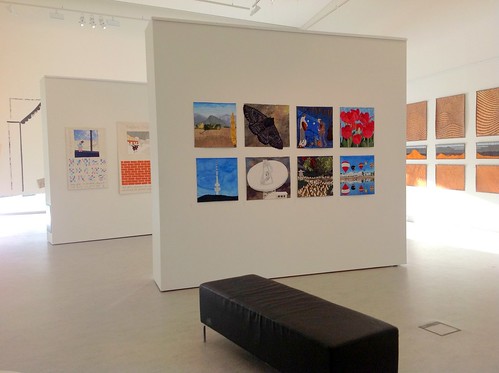
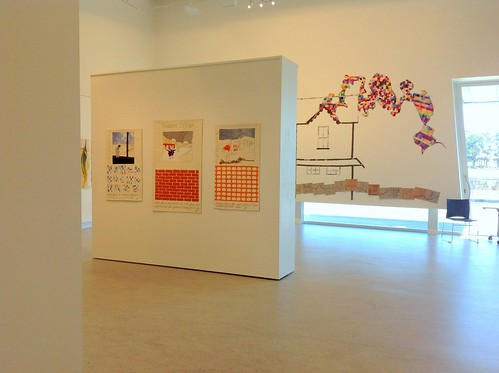

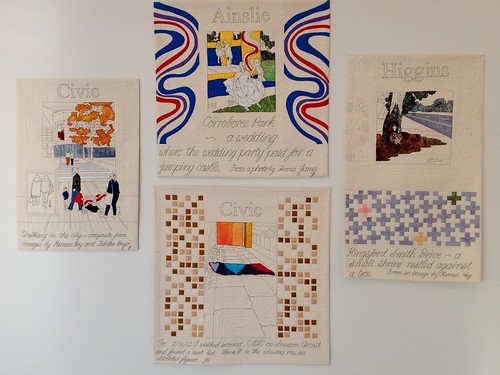
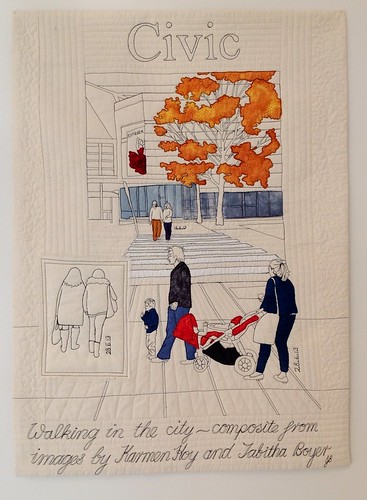
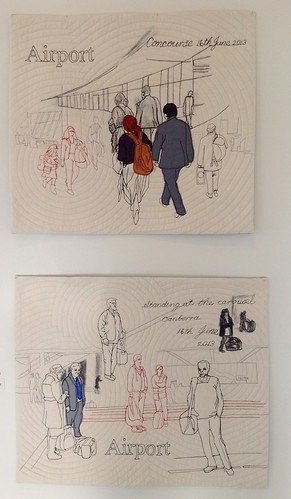
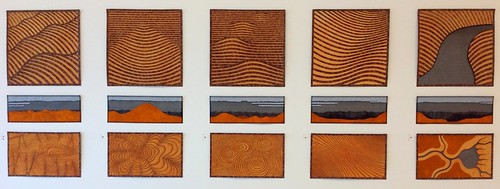
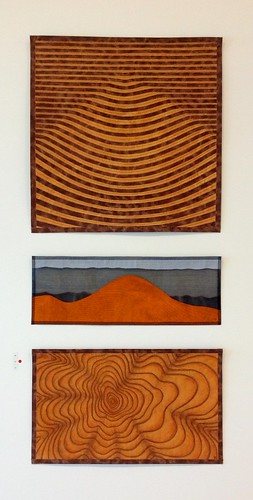

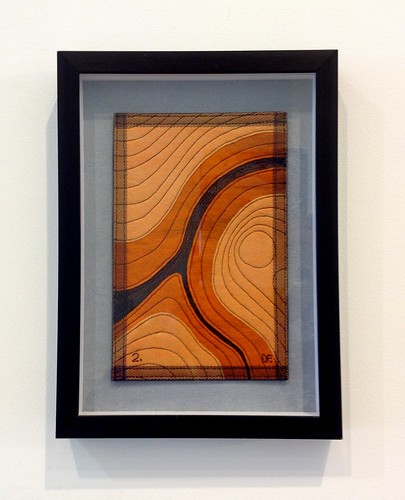
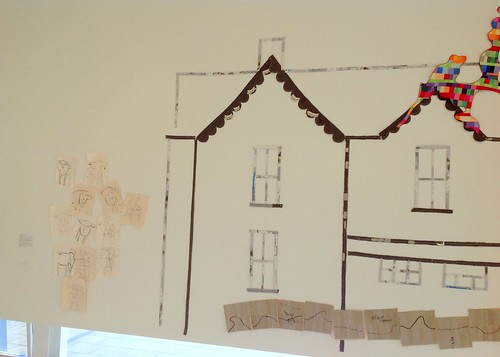
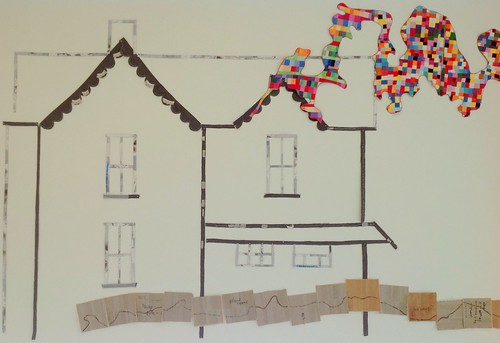
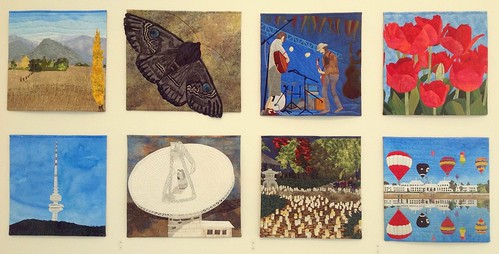
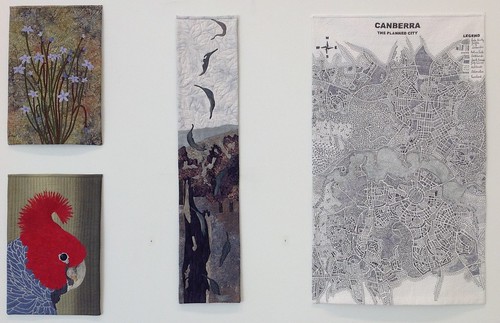
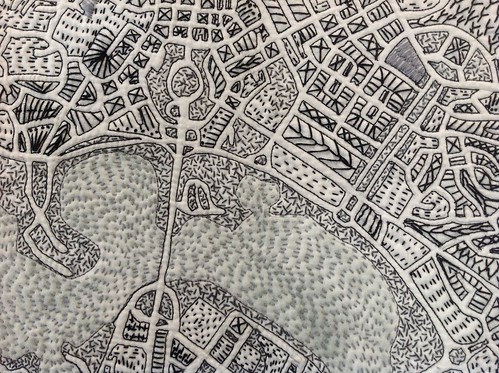
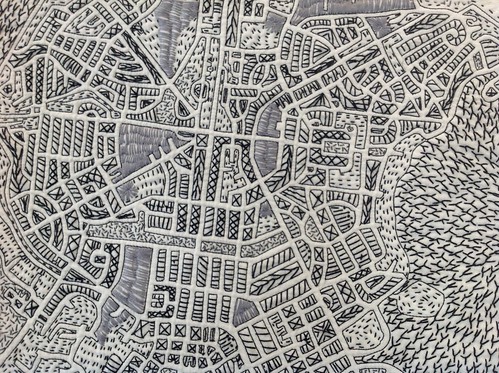
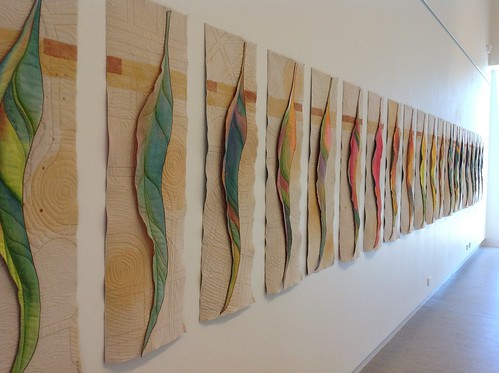
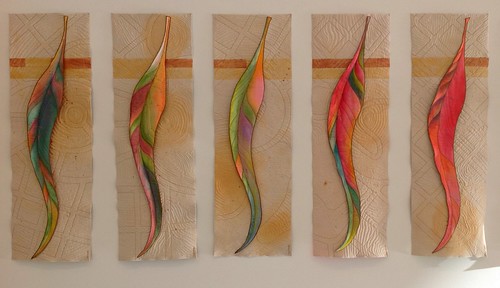
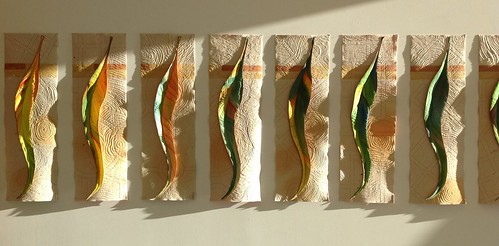
Reader Comments (8)
Loo oh! Beautiful. I'm so happy to be seeing these pictures, Jenny! From what we can see here it looks wonderful. Well done to you all - that's a lot of quilts. Awfully curious about the missing element now.
Wonderful! Your work and that of your group provides constant inspiration and I only wish it were possible to see it "in person".
It is a beautiful exhibition. I am just so glad you have put it on your blog for others to see.
What an amazing exhibition and tribute to Canberra. The work from the Tactile group just gets better and better!
Thank you, Jenny for taking the time from your crazy schedule to post images of this exhibition. If only I could have stayed in your beautiful country a bit longer, I would have been able to see this beautifully executed work in person. Well done all of you and thanks again for sharing.
Gorgeous exhibition - what a shame that it won't travel! Thank you for posting the photos so that we can at least see them here.
What a wonderful exhibit! We will be in Canberra at the end of September - will it still be showing then? I would love to see these pieces in person!
It's quite interesting to see the different perspectives of Canberra. i grew up there, but left when I was 15 and my recollections are a little different to what has been portrayed here in perhaps a modern Canberra. But it is also interesting to see that we all perceive the same place in different ways. Terrific exhibit. Hope I can see it in person.